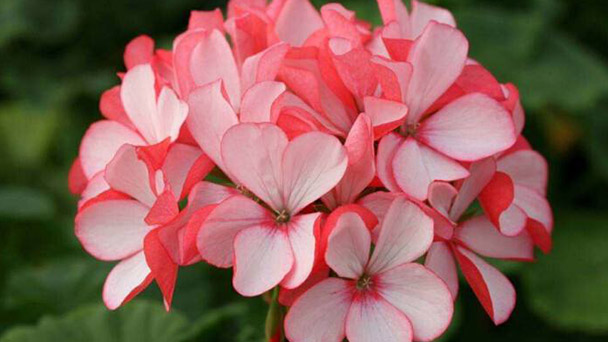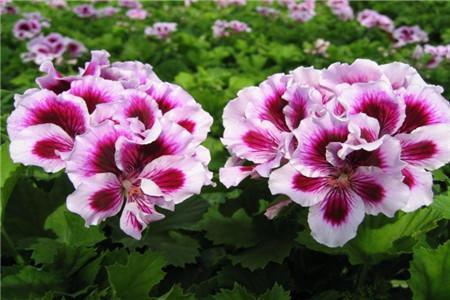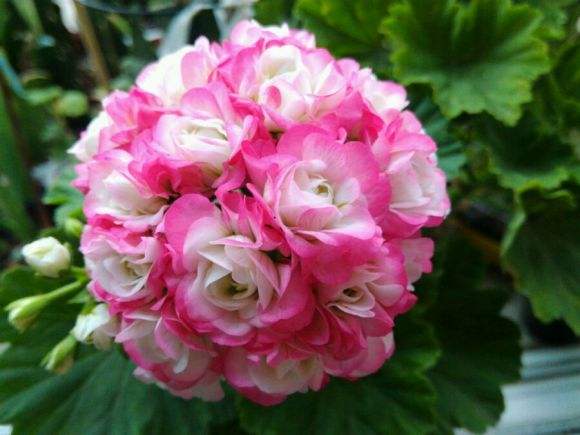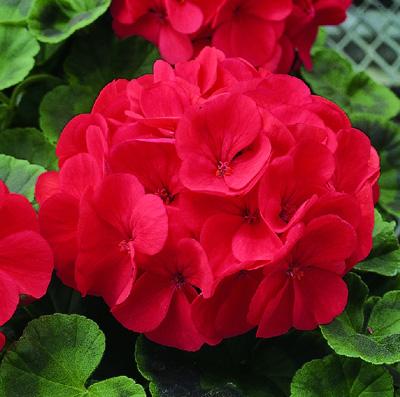Pelargonium Hortorum Profile
Written by Maggie
Sep 18 2021

Pelargonium Hortorum belongs to the geranaceae family, including about 230 species of perennial succulent, subshrubs or shrubs. Pelargonium Hortorum is native to southern Africa and is widely cultivated all over the world.
The young plants of pelargonium hortorum are fleshy herbs, and the old plants are semi-lignified; in the West, they are good flowers for decorating window sills, and they are especially common in continental Europe, such as Germany and Austria.
Pelargonium Hortorum Picture

Pelargonium Hortorum Morphological Characteristics
Pelargonium Hortorum is a perennial herb with a height of 30-60 cm. The stem is erect, the base is lignified, the upper part is fleshy, much branched or unbranched, with obvious nodes, densely pubescent, with a strong fishy smell. The leaves are alternate; the stipules are wide triangular or ovoid, 7-15 mm long, puberulent and glandular hairs; petiole 3-10 cm long, pilose and glandular hairs; leaf blade round or kidney-shaped, stem heart-shaped, 3-7 cm in diameter, wavy lobed, with round teeth. Both sides are transparent pubescent, and there are dark red horseshoe-shaped rings within the leaf margins on the surface.
Pelargonium Hortorum umbels axillary, with many flowers, total pedicel longer than leaves, pubescent; involucre several, broadly ovate; pedicel 3-4 cm, pilose and glandular hairs. The bud stage is drooping and the flowering stage is erect; sepals are narrowly lanceolate, 8-10 mm long, densely glandular hairs and pilose outside, petals red, orange-red, pink or white, broadly obovate, 12-15 mm long, 6-8 wide Millimeters, apex rounded, base with short claws, lower 3 usually larger; The ovary is densely pubescent.
The capsule is about 3 cm long and pilose. Flowering period from May to July, fruiting period from June to September
Pelargonium Hortorum Growth habit
Pelargonium Hortorum likes to be warm in winter and cool in summer. In winter, the indoor temperature is kept at 10-15℃ every day, and the temperature at night is above 8℃, and it can bloom normally. But the optimum temperature is 15-20℃. Pelargonium Hortorum likes dryness and dampness. It should not be watered too much in winter. If the soil is wet, the stems will be soft and unfavorable for the germination and opening of flowering branches; long-term excessive humidity will cause the plants to grow longer, the flowering branches will move up, and the leaves will gradually yellow and fall off.
Pelargonium Hortorum needs plenty of sunlight during its growth period, so it must be placed in the sun in winter. Insufficient light, long stems and leaves, thin pedicels, and stunted inflorescence; flower buds under low light often do not bloom smoothly and wither early. Geraniums don't like big fertilizer. Too much fertilizer will make Pelargonium Hortorum grow too vigorously, and it will not bloom.
Pelargonium Hortorum Distribution
It is commonly cultivated throughout China. Native to southern Africa.
Before 1600, Pelargonium Hortorum was taken back to the botanical garden in Leiden, Netherlands by a ship that had docked at the Cape of Good Hope. In 1631, the English horticulturist John Tradescant bought seeds from Rene Morin in Paris and introduced the plant to England.

Pelargonium Hortorum Varieties
Pelargonium peltatum (L.) Ait.
Pelargonium peltatum (L.) Ait. has a variety of Amethyst, flower purple-red; Lambada98, flower pink; Shany, flower semi-double, dark red; Penve, flower semi-double, pink; Tomado, flower single, white. In addition, there are Freckles of tetraploid Pelargonium Hortorum, with pink flowers; TetraScarlet, large-flowered species, with bright red flowers.
Pelargoniumgraveolens L'Hér.
The trade name of Pelargoniumgraveolens L'Hér. is mosquito repellent. Pelargoniumgraveolens L'Hér. is a Pelargonium Hortorum) plant, which is popular because of its volatile aroma. It can be used to make essential oils. The main ingredients are geraniol, citronellol, linalool, etc. There are many kinds of aromas, including lemon, rose, fruit and so on. Because of its easy cultivation and management and high yield of essential oils, it can be used as a substitute for other essential oils with low yields, such as rose essential oil or neroli essential oil.
Pelargoniumzonale Aif.
PelargoniumzonaleAif. is a subshrub with a height of 30-80 cm. The stem is upright, cylindrical and nearly fleshy. The leaves are ovate shield-shaped or obovate, with dark brown horseshoe-shaped rings on the leaf surface, and the leaf margins are blunt. The flowers are dark red to white, with fewer flowers, and anniversaries of flowering.
Pelargoniumdomesticum Bailey.
Pelargoniumdomesticum Bailey. is a perennial herb, 30-40 cm tall, upright stem, branched. The base is lignified and pubescent is developed. The leaves are alternate; the stipules are membranous, triangular and broadly ovoid; the leaves are round kidney-shaped, and the base is heart-shaped or truncated. The umbels are opposite to the leaves or axillary, obviously longer than the leaves, with several flowers; sepals are lanceolate, and the corolla is pink, reddish, deep red or white.

Latest Updated
- Benefits of Bugleweed - 7 Science-backed Health Benefits
- Bugleweed Dangers & Side Effects - Is It Poisonous?
- How to Plant Evergreen Trees - What You Should Know
- When to Plant Evergreens - Grow Guide for Evergreen Trees
- 12 Wonderful Evergreen Shrubs for Your Garden
- 12 Popular Evergreen Plants with Pictures for Beginners
- When And How To Prune A Lilac Bush Like a Pro
- How to Grow & Care for Lilac Vine (Hardenbergia Violacea)
- Japanese Lilac Tree (Syringa Reticulata) Care & Propagation Guide
- Shumard Oak Pros and Cons - What to Know
Popular Articles
- Winter maintenance of Antirrhinum Majus
- How to Grow Terminalia Mantaly Tree
- How to Grow and Care for Crossostephium Chinense
- How to grow Antirrhinum Majus in spring
- Peristeria Elata (Dove Orchid) Profile: Info & Care Guide
- Underwatered Snake Plant (Sansevieria Trifasciata) - Signs And How To Fix
- How to Care for Brazilian Jasmine Plant (Mandevilla Sanderi)
- How to Grow & Care for Graptopetalum Purple Delight in Summer
- Rosa Chinensis (China Rose): Plant Growing & Care Tips
- How to Care for Baby Sun Rose (Aptenia Cordifolia)